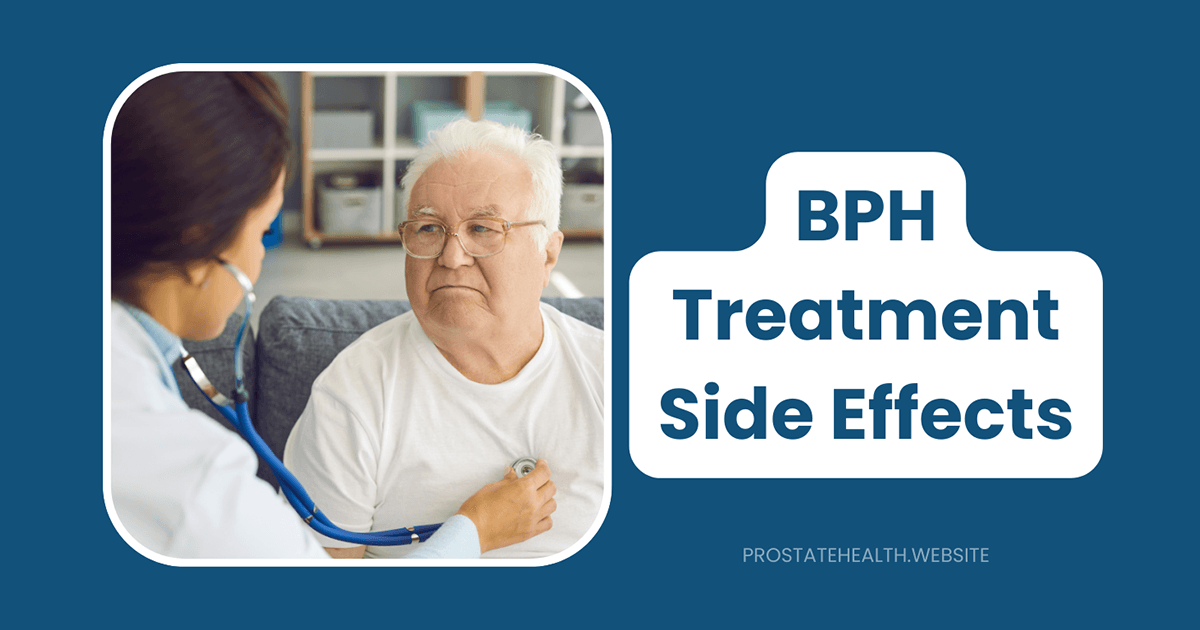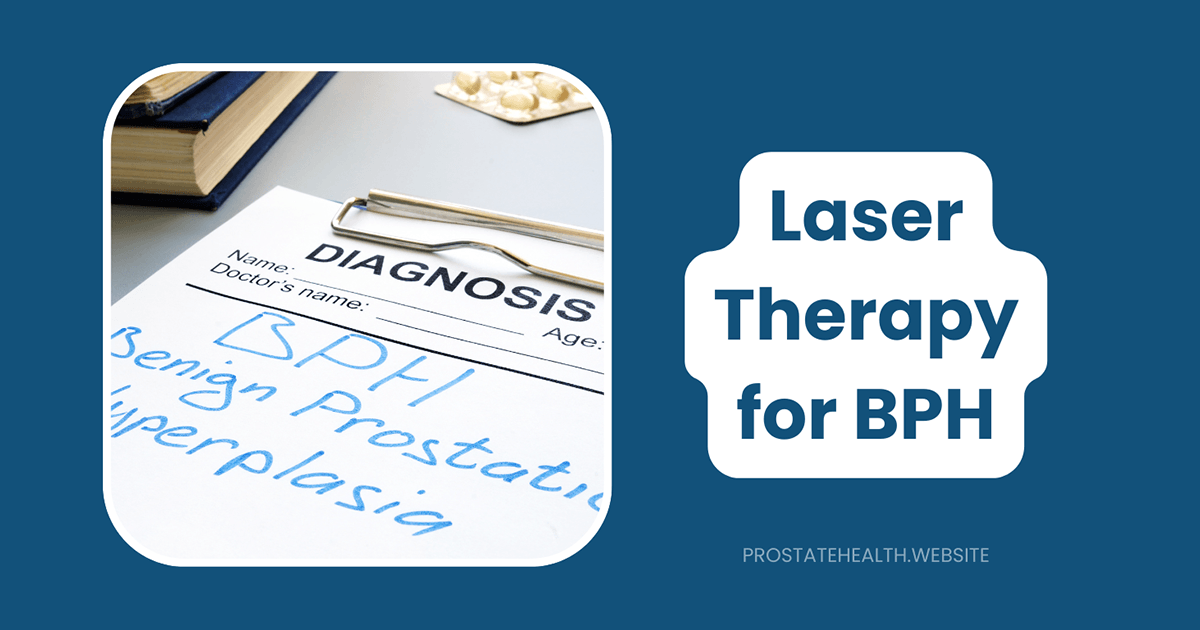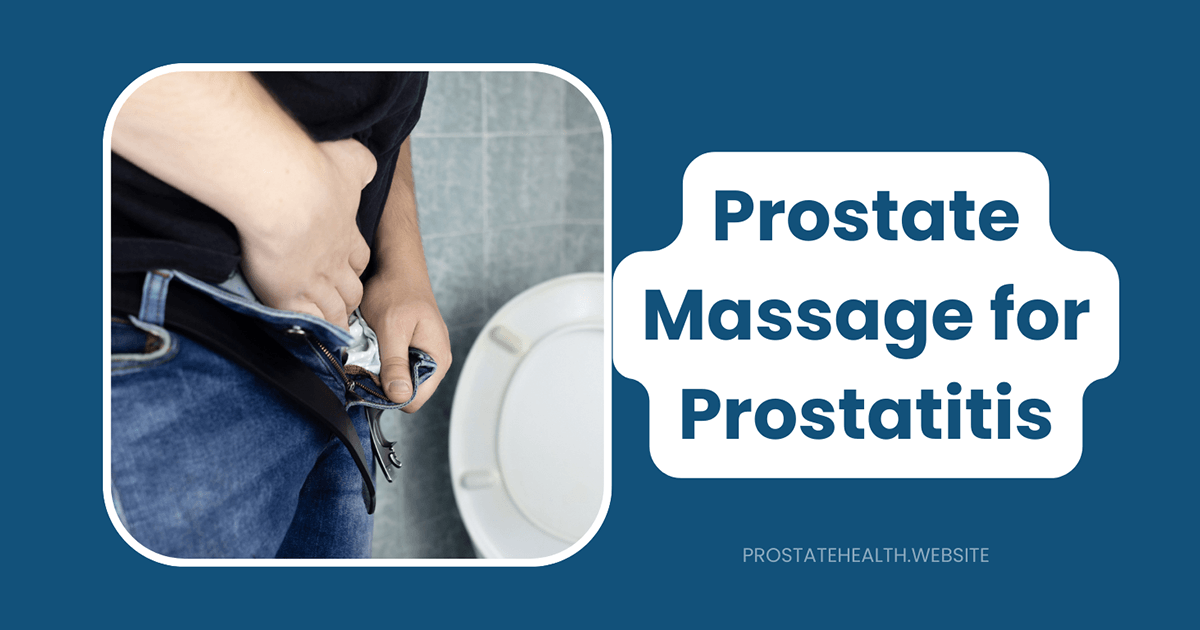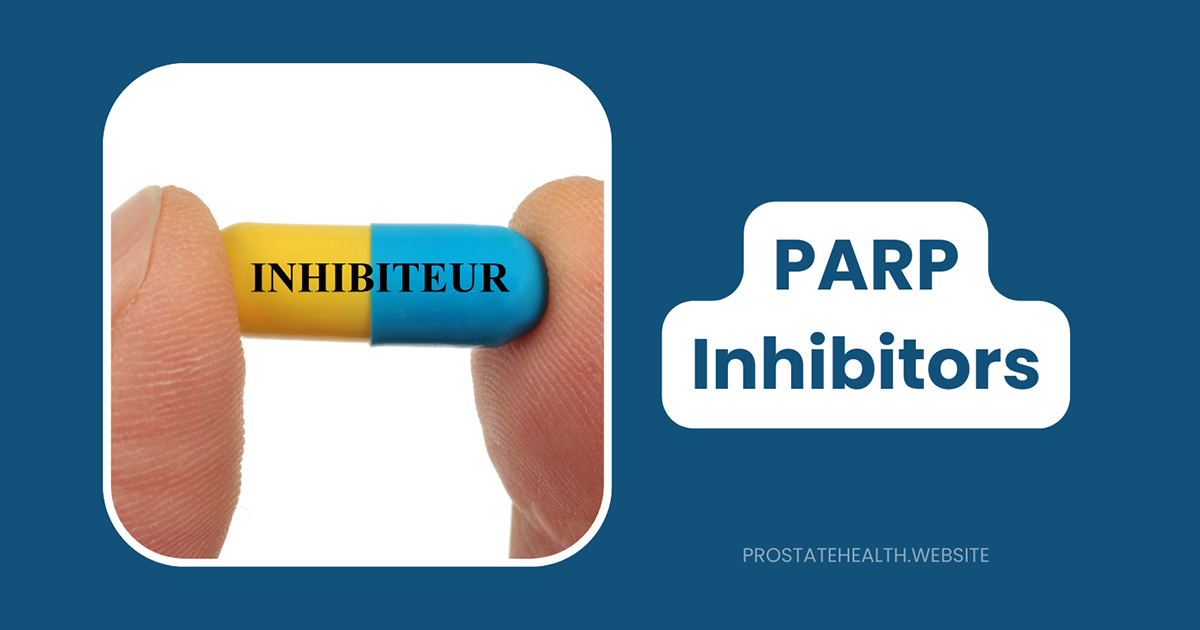Combination Therapy for BPH: When One Medication Isn’t Enough

If you’re one of the millions of men dealing with benign prostatic hyperplasia (BPH), you know that finding effective symptom relief can sometimes be challenging. While many men respond well to a single medication, others find their symptoms persist despite treatment. This is where combination therapy—using two or more medications together—can make a significant difference.
“Combination therapy represents an important advancement in BPH management,” explains Dr. Robert Chen, urologist. “For men with moderate to severe symptoms or larger prostates, combining medications that work through different mechanisms can provide superior relief compared to single-drug approaches.”
This comprehensive guide explores the science behind combination therapy for BPH, the various medication combinations available in 2025, who benefits most from this approach, and what to expect when starting a multi-drug regimen.
Understanding BPH and Treatment Goals
Before diving into combination therapy, let’s review what BPH is and what we’re trying to achieve with treatment.
Benign prostatic hyperplasia is a non-cancerous enlargement of the prostate gland that commonly affects men as they age. By age 60, about 50% of men experience symptoms, and by age 85, this number jumps to 80%. When the prostate enlarges, it can press against the urethra and bladder, causing urinary symptoms such as:
- Frequent urination, especially at night
- Weak urine stream
- Difficulty starting urination
- Feeling that the bladder isn’t completely empty
- Urgency to urinate
- Straining during urination
The goals of BPH treatment include:
- Relieving bothersome urinary symptoms
- Improving quality of life
- Preventing complications like urinary retention
- Reducing the need for surgery
- Minimizing side effects
For many men, a single medication achieves these goals. But when monotherapy falls short, combination therapy offers a powerful alternative.
Why Consider Combination Therapy?
There are several compelling reasons to consider combination therapy for BPH:
1. Enhanced Symptom Relief
Research consistently shows that certain medication combinations provide superior symptom improvement compared to single medications. For example, the landmark MTOPS (Medical Therapy of Prostatic Symptoms) study demonstrated that combining an alpha-blocker with a 5-alpha reductase inhibitor resulted in a 66% reduction in symptom progression compared to either medication alone.
2. Targeting Multiple Aspects of BPH
BPH symptoms arise from several mechanisms:
- Static component: Physical obstruction from enlarged prostate tissue
- Dynamic component: Muscle tension in the prostate and bladder neck
- Bladder dysfunction: Changes in bladder muscle function due to chronic obstruction
Different medications target different aspects of BPH, so combining them can address multiple mechanisms simultaneously.
3. Disease Progression Prevention
Some medication combinations not only relieve symptoms but also reduce the risk of BPH progression. The CombAT (Combination of Avodart and Tamsulosin) trial found that combining dutasteride and tamsulosin significantly reduced the risk of acute urinary retention and BPH-related surgery compared to either medication alone.
4. Personalized Symptom Management
Combination therapy allows for more tailored treatment based on your specific symptom profile. For example, if you have both obstructive and irritative symptoms, combining medications that address both can provide more comprehensive relief.
“I tried an alpha-blocker alone for six months, but still had to get up 3-4 times each night,” shares Michael, 67. “Adding a 5-alpha reductase inhibitor made a huge difference. Within three months, I was sleeping through most nights and feeling much better during the day.”
Common Medication Combinations for BPH
Several medication combinations have proven effective for BPH management. Let’s explore the most common and well-studied options:
1. Alpha-Blockers + 5-Alpha Reductase Inhibitors
This is the most extensively studied and widely used combination for BPH.
How they work together:
- Alpha-blockers (tamsulosin, alfuzosin, silodosin, etc.) relax the smooth muscles in the prostate and bladder neck, improving urine flow quickly
- 5-alpha reductase inhibitors (5-ARIs) (finasteride, dutasteride) shrink the prostate over time by blocking the conversion of testosterone to dihydrotestosterone (DHT)
Benefits of this combination:
- Alpha-blockers provide rapid symptom relief (days to weeks)
- 5-ARIs gradually shrink the prostate (over 3-6 months)
- Together, they address both the dynamic and static components of BPH
- Long-term studies show reduced risk of BPH progression, acute urinary retention, and need for surgery
Ideal candidates:
- Men with moderate to severe symptoms
- Those with larger prostates (>30-40cc)
- Patients at risk for BPH progression (PSA >1.5 ng/mL, age >50)
Research evidence: The 2010 CombAT trial found that combining tamsulosin and dutasteride reduced the relative risk of acute urinary retention by 68% and BPH-related surgery by 71% compared to tamsulosin alone over four years.
2. Alpha-Blockers + Anticholinergics
This combination targets both obstructive symptoms and overactive bladder symptoms that often coexist with BPH.
How they work together:
- Alpha-blockers improve urine flow by relaxing prostate and bladder neck muscles
- Anticholinergics (solifenacin, tolterodine, etc.) reduce bladder overactivity by blocking muscarinic receptors in the bladder
Benefits of this combination:
- Addresses both obstructive and irritative symptoms
- Particularly helpful for frequency, urgency, and nocturia
- Can improve quality of life when storage symptoms are prominent
Ideal candidates:
- Men with significant storage symptoms (frequency, urgency, nocturia)
- Those with urodynamically confirmed detrusor overactivity
- Patients with post-void residual volumes <200 mL
Research evidence: The TIMES study demonstrated that combining tamsulosin and tolterodine provided significantly greater improvement in storage symptoms compared to either medication alone, without increasing the risk of urinary retention in men with BPH and overactive bladder symptoms.
3. Alpha-Blockers + Beta-3 Agonists
This newer combination has gained popularity as an alternative to alpha-blocker plus anticholinergic therapy, with potentially fewer side effects.
How they work together:
- Alpha-blockers improve urine flow
- Beta-3 agonists (mirabegron, vibegron) relax the bladder during the storage phase by activating beta-3 adrenergic receptors
Benefits of this combination:
- Addresses both obstructive and storage symptoms
- Fewer cognitive side effects than anticholinergics
- Lower risk of dry mouth and constipation
- May be safer for older men
Ideal candidates:
- Men with storage symptoms who cannot tolerate anticholinergics
- Those with cognitive concerns or at risk for dementia
- Patients with dry mouth or constipation from anticholinergics
Research evidence: Recent studies show that combining an alpha-blocker with a beta-3 agonist provides similar efficacy to alpha-blocker plus anticholinergic therapy for addressing residual storage symptoms, but with a better side effect profile.
4. Alpha-Blockers + PDE5 Inhibitors
This combination is particularly beneficial for men who have both BPH and erectile dysfunction.
How they work together:
- Alpha-blockers improve urine flow
- PDE5 inhibitors (tadalafil, sildenafil) relax smooth muscle in the prostate and bladder neck through a different mechanism while also improving erectile function
Benefits of this combination:
- Addresses both urinary symptoms and erectile dysfunction
- May provide synergistic effects on urinary symptoms
- Improves quality of life in multiple domains
Ideal candidates:
- Men with concurrent BPH and erectile dysfunction
- Those who experience sexual side effects from other BPH medications
- Patients who prefer to take fewer pills (tadalafil 5mg daily is approved for both BPH and ED)
Research evidence: Studies suggest that combining alpha-blockers with PDE5 inhibitors is safe and may provide additional benefits for urinary symptoms compared to alpha-blockers alone, though more research is needed to determine the optimal combination.
5. Multiple Alpha-Blockers
A newer approach being studied involves combining two different alpha-blockers.
How they work together:
- Different alpha-blockers may target slightly different receptor subtypes
- This may provide more comprehensive blockade of alpha receptors in the prostate and bladder neck
Benefits of this combination:
- May provide additional symptom relief for refractory cases
- Utilizes medications with established safety profiles
Ideal candidates:
- Men with inadequate response to a single alpha-blocker
- Those who wish to avoid other medication classes due to side effects
Research evidence: A 2025 study comparing single-agent alpha-blocker therapy (silodosin) with dual-agent therapy (silodosin + alfuzosin) found that the dual-agent approach provided significantly greater improvement in symptoms and urinary flow rates without increasing adverse effects.
Who Benefits Most from Combination Therapy?
While combination therapy offers advantages, it’s not necessary for everyone with BPH. Here’s who tends to benefit most:
1. Men with Moderate to Severe Symptoms
If your International Prostate Symptom Score (IPSS) is above 8 (moderate) or 19 (severe), you may be more likely to benefit from combination therapy, especially if a single medication hasn’t provided adequate relief.
2. Men with Larger Prostates
If your prostate is larger than 30-40cc (as measured by ultrasound or MRI), combination therapy—particularly alpha-blocker plus 5-ARI—may be more effective than monotherapy.
3. Men at Risk for Disease Progression
Several factors increase your risk of BPH progression:
- Age over 50
- PSA level above 1.5 ng/mL
- Severe symptoms at baseline
- Large prostate volume
- Poor urinary flow rate
If you have these risk factors, combination therapy may help prevent complications like urinary retention or the need for surgery.
4. Men with Mixed Symptom Patterns
If you have both obstructive symptoms (weak stream, hesitancy) and storage symptoms (frequency, urgency, nocturia), combination therapy targeting both aspects may provide more comprehensive relief.
5. Men Who Have Failed Monotherapy
If you’ve tried a single medication with inadequate results, adding a second medication that works through a different mechanism often provides additional benefit.
“After trying several single medications with limited success, my doctor suggested combining tamsulosin with dutasteride,” shares Robert, 72. “The difference was remarkable. My symptoms improved significantly, and I’ve been able to avoid surgery for over five years now.”
Potential Drawbacks of Combination Therapy
While combination therapy offers significant benefits, it’s important to consider potential drawbacks:
1. Increased Risk of Side Effects
Each medication carries its own side effect profile, and combining medications may increase the overall risk of experiencing adverse effects.
2. Drug Interactions
Some BPH medications may interact with each other or with medications you take for other conditions. For example, combining alpha-blockers with PDE5 inhibitors requires careful dosing to avoid excessive blood pressure lowering.
3. Cost Considerations
Taking multiple medications typically costs more than a single drug, which may be a concern depending on your insurance coverage and financial situation.
4. Compliance Challenges
Managing multiple medications with different dosing schedules can be challenging and may reduce adherence to the treatment regimen.
5. Delayed Benefit for Some Combinations
Some combinations (particularly those including 5-ARIs) may take several months to show maximum benefit, requiring patience and persistence.
Starting Combination Therapy: What to Expect
If you and your doctor decide to try combination therapy, here’s what to expect:
Initial Evaluation
Before starting combination therapy, your doctor will likely perform:
- Thorough symptom assessment using the IPSS questionnaire
- Physical examination including digital rectal exam
- PSA blood test
- Urinalysis to rule out infection
- Possibly uroflowmetry to measure urine flow
- Possibly an ultrasound to measure prostate size and post-void residual urine
Sequential vs. Simultaneous Initiation
Medications can be started in two ways:
Sequential approach:
- Start with one medication (typically an alpha-blocker for quick symptom relief)
- Add the second medication after assessing response to the first
- Allows for better identification of which medication causes any side effects
Simultaneous approach:
- Start both medications at the same time
- May provide faster overall symptom improvement
- Preferred when rapid relief is needed and risk factors for progression are present
Monitoring and Follow-up
Regular follow-up is essential to assess:
- Symptom improvement using the IPSS questionnaire
- Side effects and tolerability
- Medication adherence
- Need for dosage adjustments
- Long-term efficacy
Typical follow-up schedule:
- First visit: 4-6 weeks after starting therapy
- Second visit: 3 months
- Subsequent visits: Every 6-12 months if stable
Potential Side Effects to Watch For
Common side effects vary by medication combination:
Alpha-blocker + 5-ARI:
- Dizziness, headache, fatigue (from alpha-blocker)
- Sexual side effects including decreased libido, erectile dysfunction, and ejaculatory disorders (primarily from 5-ARI)
- Orthostatic hypotension (from alpha-blocker)
Alpha-blocker + Anticholinergic:
- Dry mouth, constipation, blurred vision (from anticholinergic)
- Cognitive effects, especially in older men (from anticholinergic)
- Potential for urinary retention (monitor post-void residual)
Alpha-blocker + Beta-3 Agonist:
- Hypertension (from beta-3 agonist)
- Headache, nasopharyngitis (from beta-3 agonist)
Alpha-blocker + PDE5 Inhibitor:
- Headache, flushing, nasal congestion (from PDE5 inhibitor)
- Potential for additive blood pressure lowering effects
“When I started combination therapy, my doctor warned me about possible side effects,” says Thomas, 65. “I did experience some dizziness initially, but it improved after a few weeks. The symptom relief was worth the temporary discomfort.”
Optimizing Your Combination Therapy
These strategies can help you get the most benefit from combination therapy while minimizing side effects:
1. Take Medications as Prescribed
Consistency is key for BPH medications. Some tips:
- Use pill organizers or smartphone reminders
- Link medication times to daily routines
- Understand specific instructions (with/without food, time of day)
2. Be Patient
Some combinations take time to show full benefit:
- Alpha-blockers typically work within days to weeks
- 5-ARIs may take 3-6 months for maximum effect
- Don’t discontinue therapy prematurely if results aren’t immediate
3. Manage Side Effects Proactively
Many side effects can be minimized:
- Take alpha-blockers at bedtime to reduce dizziness impact
- Stay well-hydrated when taking anticholinergics
- Rise slowly from sitting or lying positions to prevent orthostatic hypotension
- Discuss dosage adjustments if side effects are troublesome
4. Monitor Your Symptoms
Keep track of your symptoms to help your doctor assess treatment effectiveness:
- Use symptom diaries or smartphone apps
- Note changes in urinary patterns
- Track nocturia episodes
- Report new or worsening symptoms promptly
5. Regular Follow-up
Maintain regular contact with your healthcare provider:
- Attend scheduled follow-up appointments
- Have PSA levels checked as recommended
- Discuss any concerns about medications or symptoms
The Future of Combination Therapy for BPH
Research into BPH combination therapy continues to evolve. Here are some emerging trends and future directions:
1. Personalized Medicine Approaches
Researchers are working to identify genetic and biomarker profiles that predict which patients will respond best to specific medication combinations, allowing for more tailored treatment approaches.
2. Novel Combination Strategies
New medication combinations are being studied, including:
- Triple therapy with alpha-blockers, 5-ARIs, and PDE5 inhibitors
- Combinations involving newer medication classes
- Optimized dosing strategies to maximize efficacy while minimizing side effects
3. Combination Medical-Procedural Approaches
Some research is exploring the benefits of combining medications with minimally invasive procedures like Rezūm water vapor therapy or UroLift to provide comprehensive symptom relief with reduced medication burden.
4. Long-term Outcomes Data
As more long-term studies are completed, we’ll gain better understanding of the durability of response to various combination therapies and their impact on disease progression over many years.
Conclusion: A Powerful Approach for Challenging Cases
Combination therapy represents a significant advancement in BPH management, offering hope to men who haven’t found adequate relief with single medications. By targeting multiple aspects of BPH simultaneously, these medication combinations can provide superior symptom improvement, reduce disease progression, and enhance quality of life.
While not every man with BPH needs combination therapy, for those with moderate to severe symptoms, larger prostates, or risk factors for progression, this approach offers a powerful alternative to both monotherapy and surgery.
As with any treatment decision, the key is working closely with your healthcare provider to find the right combination that balances effectiveness, side effects, and your personal preferences. With the right approach, most men can achieve significant improvement in their BPH symptoms and maintain an active, comfortable lifestyle.
Frequently Asked Questions
Many men remain on combination therapy long-term, especially those with larger prostates or risk factors for progression. However, some men may be able to discontinue one medication (typically the alpha-blocker) after 6-12 months if the 5-ARI has effectively shrunk the prostate. This should only be done under medical supervision.
Most insurance plans cover established combination therapies for BPH, though coverage policies vary. Some plans may require prior authorization or documentation that monotherapy was ineffective. Generic options are available for many BPH medications, which can reduce costs.
Many men with conditions like hypertension, diabetes, or heart disease can safely take BPH combination therapy, but medication selection and dosing may need to be adjusted. Always inform your doctor about all medical conditions and medications to avoid potential interactions.
If you don’t achieve adequate symptom relief with combination therapy, your doctor may recommend:
- Trying a different medication combination
- Adjusting medication dosages
- Considering minimally invasive procedures like Rezūm or UroLift
- Evaluating surgical options like TURP (transurethral resection of the prostate)
This depends on which medications you’re taking. With alpha-blocker plus 5-ARI therapy, some men can discontinue the alpha-blocker after 6-12 months if the 5-ARI has effectively shrunk the prostate. However, this should only be done under your doctor’s guidance.
External Resources:
- American Urological Association – BPH Guidelines
- Urology Care Foundation – BPH Treatment Options
- National Institute of Diabetes and Digestive and Kidney Diseases – Prostate Enlargement






